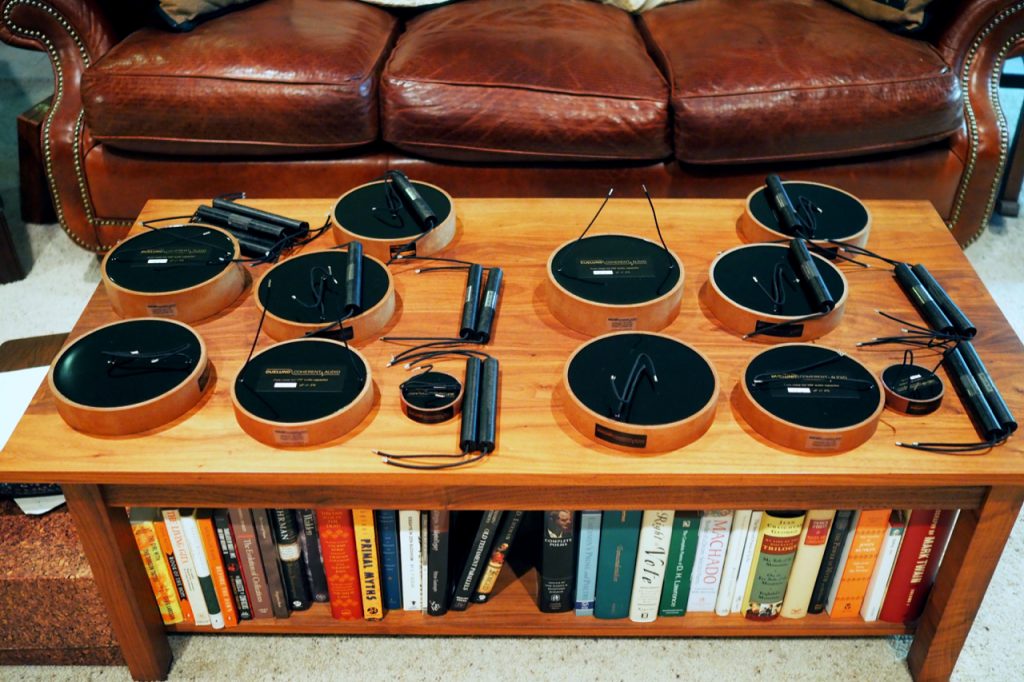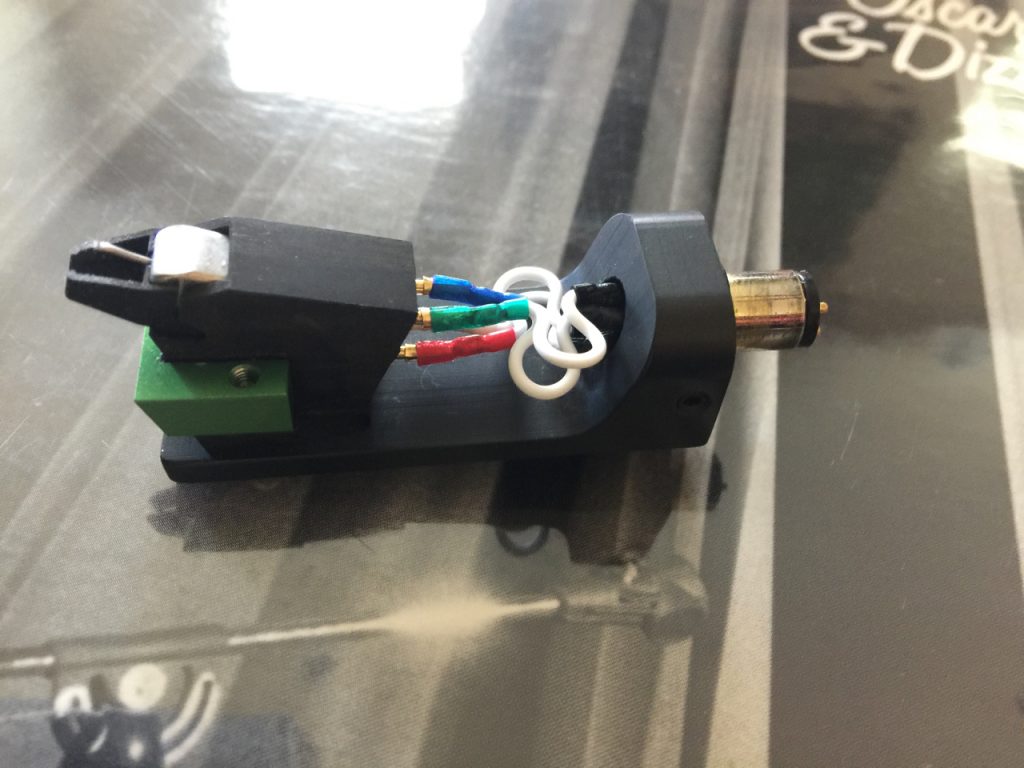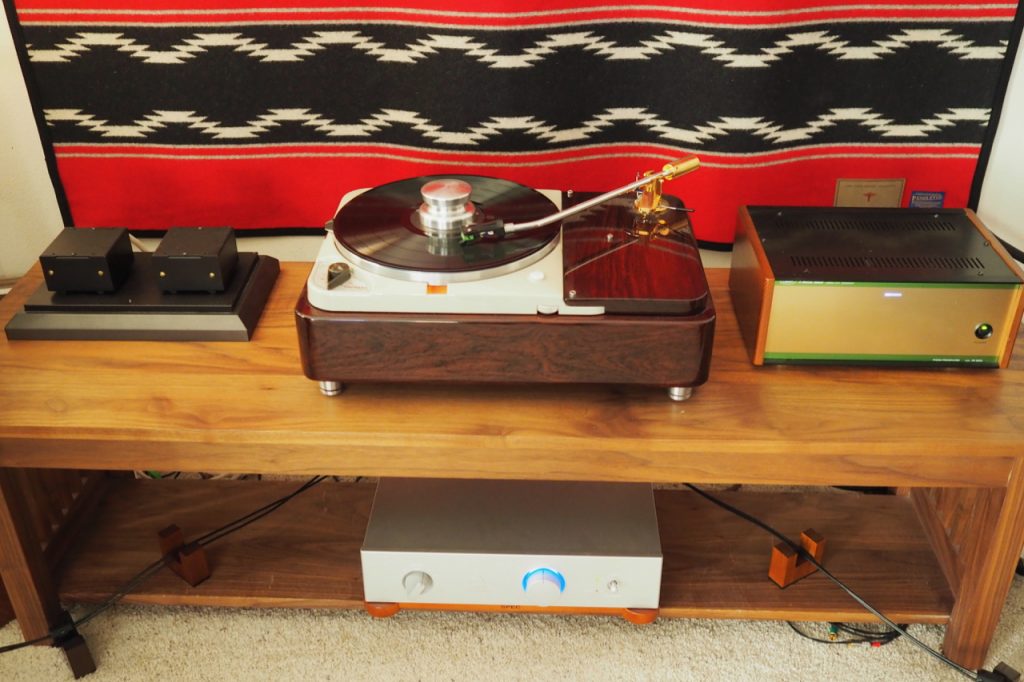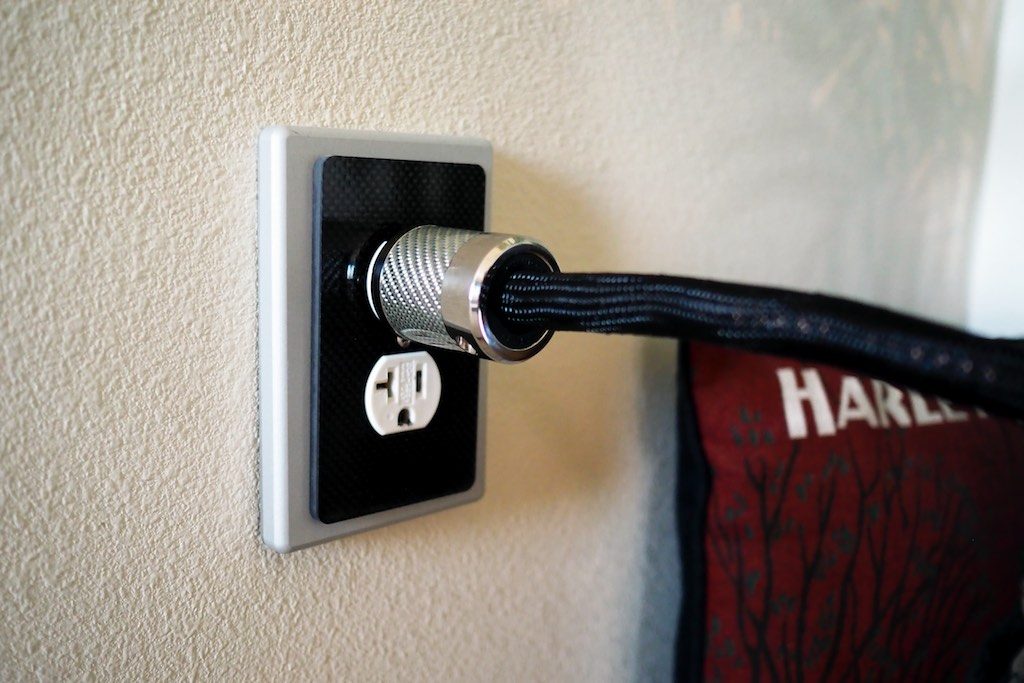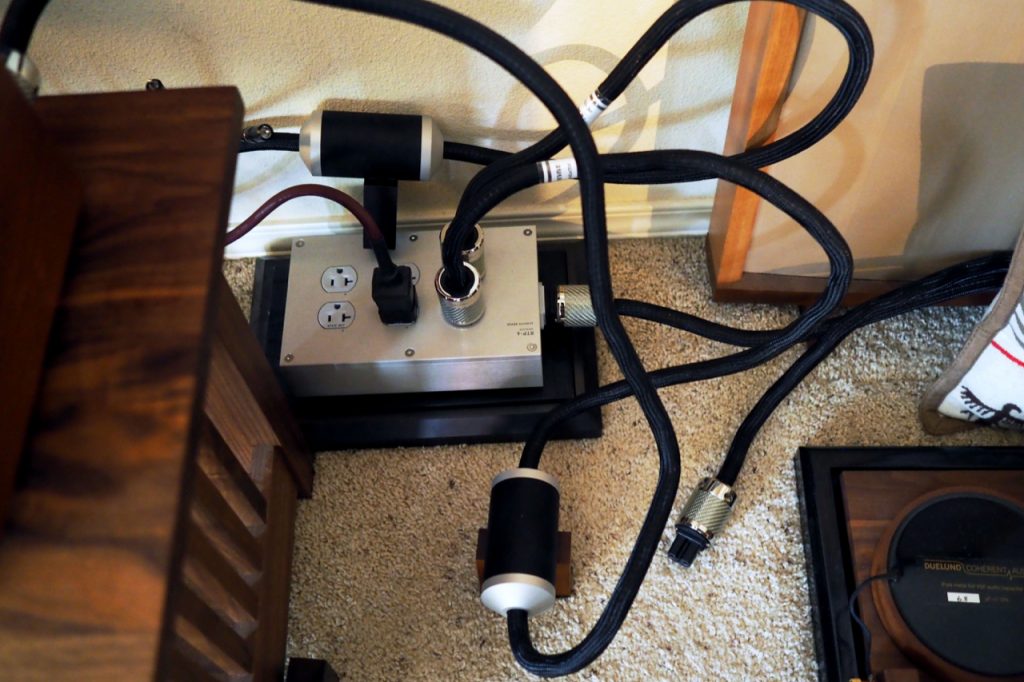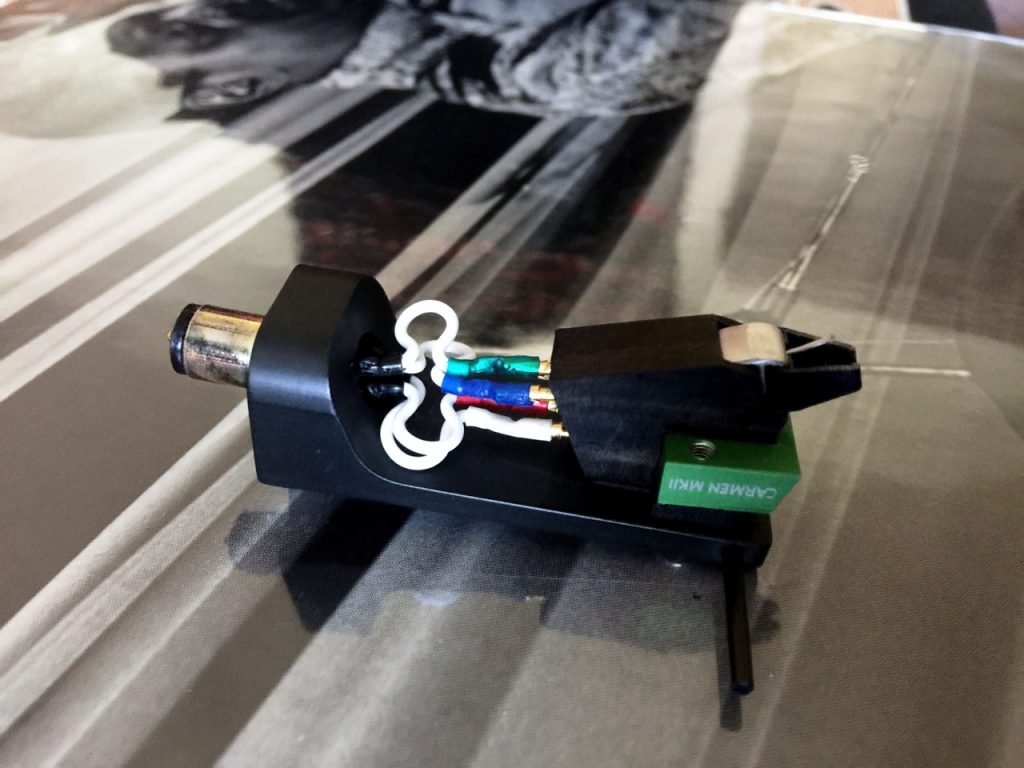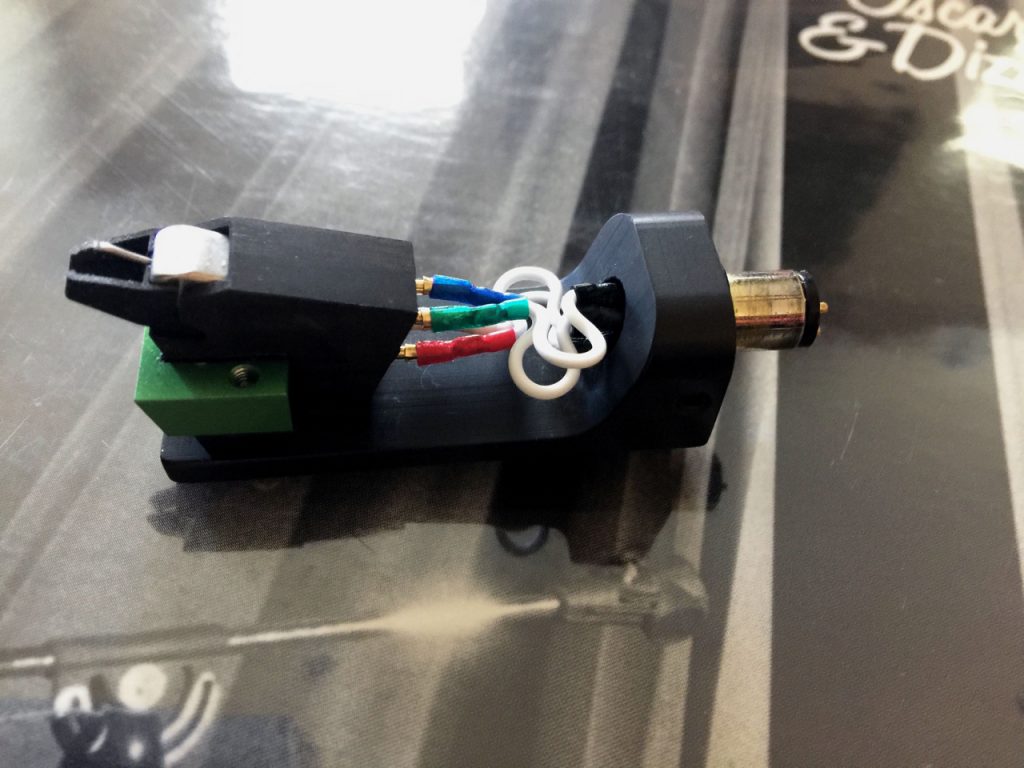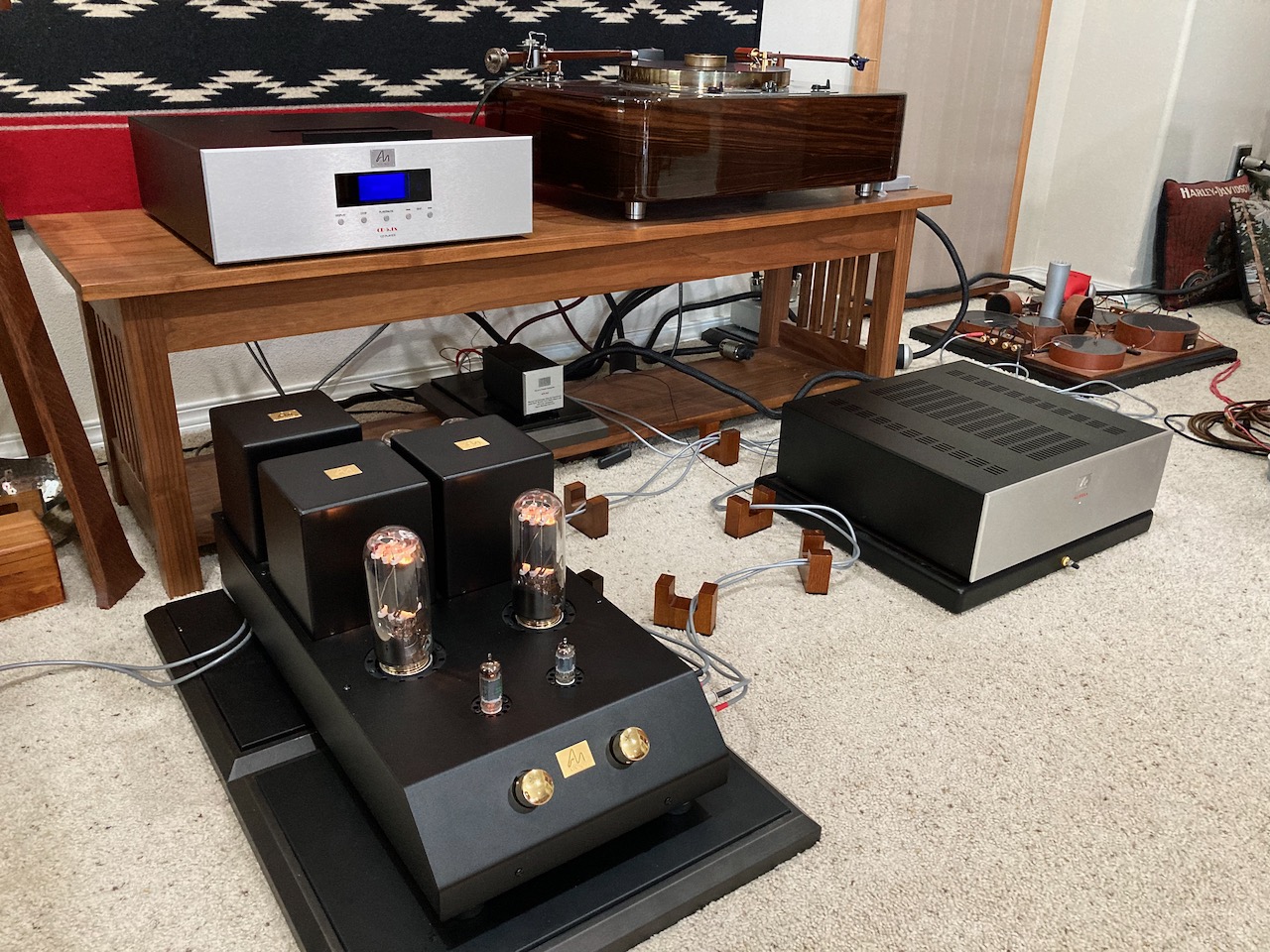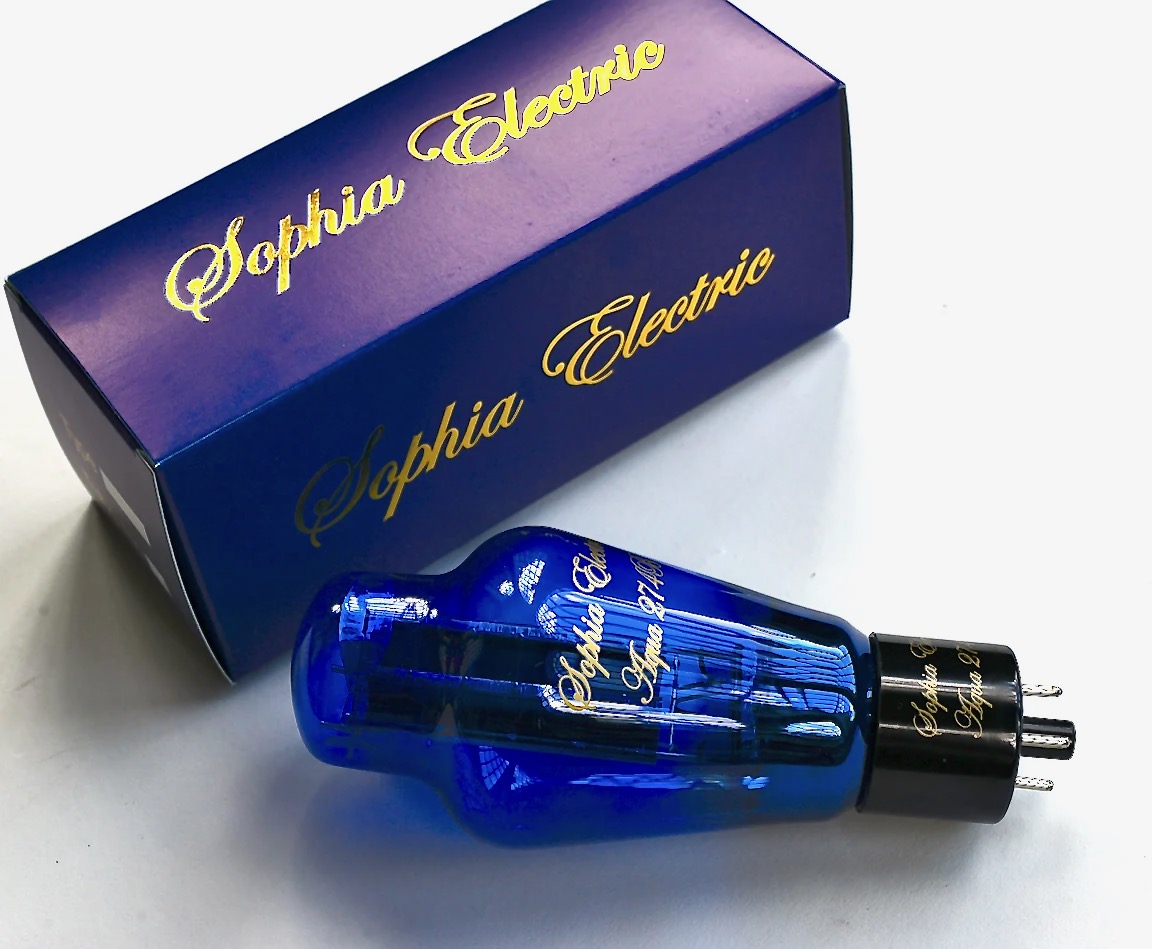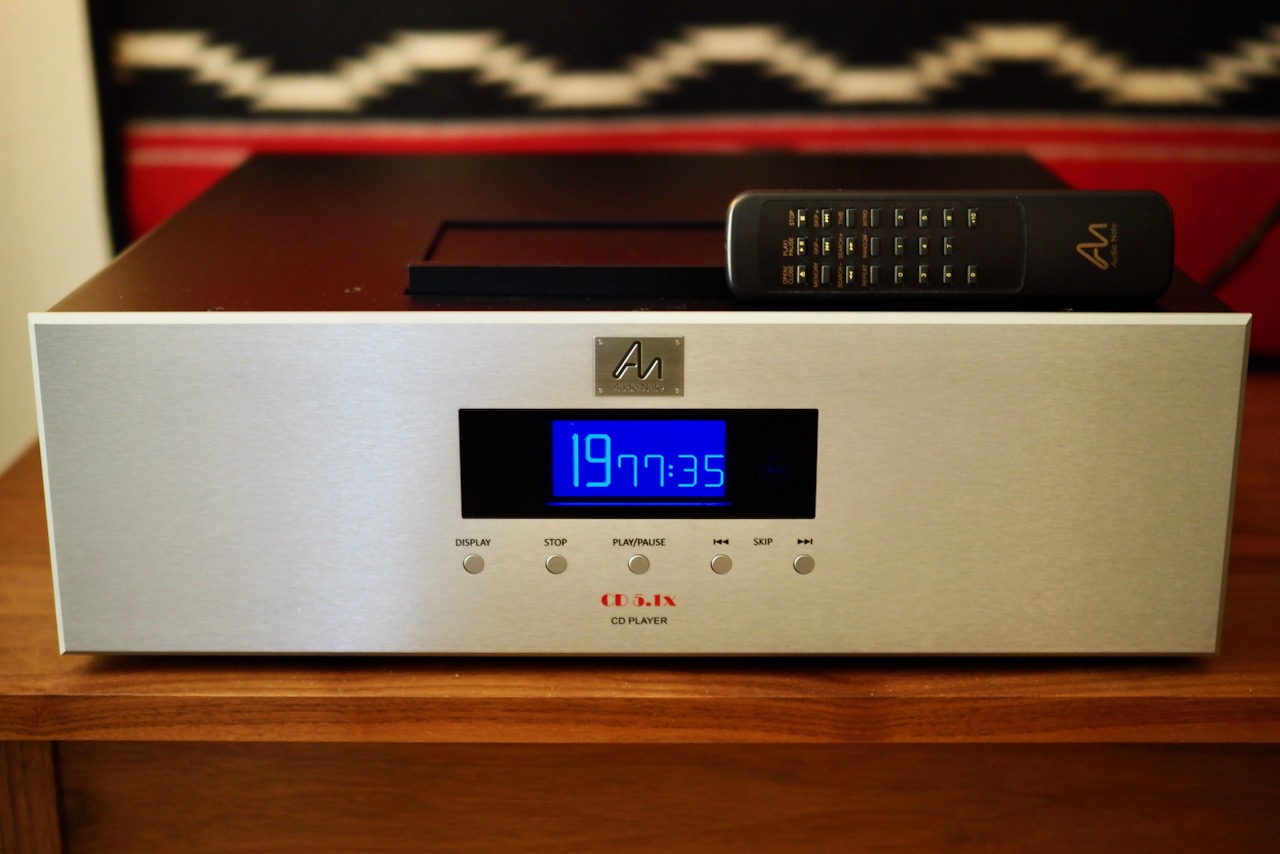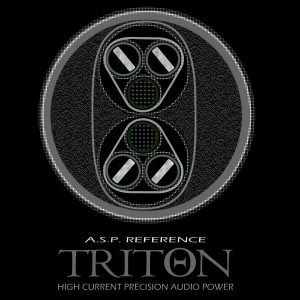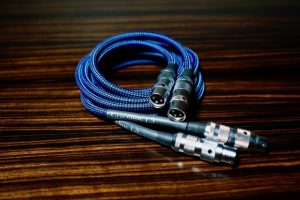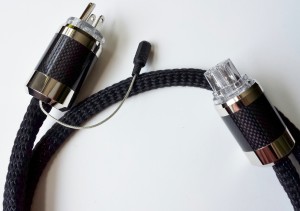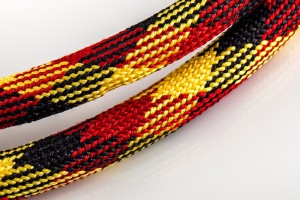Visitors to my listening room have been wowed by the sublime performance of these vintage Stokowski Altecs, and about half of them have preferred them to my hot-rodded Tannoy Westminster Royal SE loudspeakers, which is sort of amazing, given my hot-rodded Westminster's are very formidable loudspeakers in their own right.
The Stokowski Altecs will be featured in the upcoming Duelund-Altec Project article for Positive Feedback, where Frederik Carøe (Duelund Coherent Audio) and I will be showcasing the new state-of-art Duelund Coherent Audio CAST tinned-copper capacitors, inductors, and resistors in custom crossovers for these very special and historically significant pair of vintage Altec loudspeakers (above).
The vintage Stokowski Altec loudspeakers are connected by Duelund DCA12GA 600V speaker cables to a SPEC RSA-M3 EX Real Sound Amplifier, which many of you know was voiced by Shirokazu Yazaki to sound as close as possible to his personal artisanal PX25 single-ended amplifier, utilizing his own very special pair vintage Altec loudspeakers, and as you would imagine the SPEC amp is a musical & sonic match made in heaven to the Stokowski Altecs.
The SPEC is connected with the Absolute PC-TripleC/EX Interconnects to my trusty Leben RS30-EQ vacuum tube phono preamplifier, which in turn is connected to an Artisan Fidelity Statement Thorens TD124 turntable mounted with a Schick tonearm, and Soundsmith Carmen Mk II phono cartridge fitted with the Acoustic Revive PC-Triple C/EX Lead Wires as a source (above).
Other system accessories include the Acoustic Revive RR-77 and RR-888 Schumann Pulse Generators, a pair of Acoustic Revive RWL-3 Acoustic Conditioner panels located on the front wall behind each loudspeaker, and Acoustic Revive RCI-3 Cable Insulators to lift the speaker cables.
My wall AC outlet consists of the Acoustic Revive CB-1DB receptacle base plate, the Acoustic Revive CFRP-1F carbon fiber outlet plate, and the Acoustic Revive modified Oyaide R-1 receptacle (above).
An Acoustic Revive Absolute Power Cord connects the wall AC to an Acoustic Revive RPT-6 Absolute NCF Power Distributor, which all the components are plugged into.
Acoustic Revive Absolute Power Cords connect the SPEC RSA-M3 EX Real Sound Amplifier and Leben RS30-EQ vacuum tube phono preamplifier to the RPT-6, and an Acoustic Revive RAS-14-TripleC NCF Power Stabilizer connects the Thorens TD-124 to the RPT-6.
Listening Impressions
Acoustic Revive Absolute PC-Triple C/EX Lead Wires
Let's start off the listening impressions with the Acoustic Revive Absolute PC-Triple C/EX Lead Wires.
I've done quite a lot of experimenting with various headshell wires (or "lead wires" as Acoustic Revive refers to them as) over the last few years, and I've found they can make a dramatic difference to the musical & sonic performance of a hifi system in comparison to OEM headshell wires.
While pretty much everyone is aware that speaker cables, interconnects, and power cords can make a substantial musical & sonic difference in a hifi rig, fewer hifi enthusiasts seem to be aware that headshell leads can make as much or more of a difference in performance, as anything gained or lost off the front end of the signal is amplified as you move downstream through the signal path.
The same sorts of performance trends also apply to headshell wires that apply to speaker cables, interconnects, and power cords in terms of materials and construction.
For example, the type of conductor used affects the perceived musical & sonic performance just as it does with speaker cables, interconnects, and power cords. Silver conductors sound different than copper, copper conductors sound different than tinned-copper, etc., and the extruded silver-copper wire used in the Acoustic Revive Absolute PC-Triple C/EX Lead Wires have their own unique sound as well.
The gauge of the wire used also has a dramatic effect on the performance of headshell leads. The trend I have observed in my trials is that for the same conductor and insulation materials, as gauge number gets larger (and the wire diameter gets smaller), the leads tend to sound more detailed and brightly lit, and emphasize things like imaging, soundstaging, and resolution, for example. As the gauge number gets smaller (and the wire diameter gets larger) the leads tend to sound richer, warmer, and more musical.
The 1.0 mm conductor size of the Acoustic Revive Absolute PC-Triple C/EX Lead Wires translates to approximately 19GA, which is the largest diameter I have tried so far. I've constructed and/or listened to headshell leads constructed with tinned-copper conductors in 26GA, 24GA, and 22GA, and they all sound very different even when using the same conductor material.
A small change in gauge can make a big change in sound, and the choice of gauge can be used to voice a system's performance. What that means is that conductor size is not a one-size-fits-all sort of property for headshell leads, and what you like best in your hifi may differ from what I like best, based on particular system voicing needs and personal tastes.
The insulator used for the conductor also makes a difference, where natural materials tend to sound more natural and transparent, and synthetic materials tend to sound a little more closed-in, with less detail and sense of recorded acoustic.
Finally, the cartridge clips and type of solder used to attach them affects the overall sonics & musicality too, just as with RCA connectors, bananas or spades for speaker cables, and plugs for AC cords do.
The conductor material, gauge number, insulation, clips, and type of solder used all influence the musical & sonic performance of headshell leads, and combining those various elements to get a superior headshell lead is where the artistry comes in.
In my system, my headshell leads are constructed from 22GA Art of Tone tinned-copper wire with cotton insulation, AudioSilente gold-plated phosphor bronze cartridge clips, and Kester solder, which have provided headshell leads of the best balance of musicality and sonics that I have yet experienced, and they are what I used as the comparator for this review.
The large 19GA extruded silver-copper conductors used in the Acoustic Revive Absolute PC-Triple C/EX Lead Wires makes for particularly sturdy lead wires, and as an added bonus, they came pre-formed in the shape of the uppercase Greek omega, which is a very thoughtful touch that reduces the likelihood of breaking the leads at the clips' solder joints during installation by allowing some flex in the wire's "loop."
Nothing is as frustrating as having exotic lead wires break at their clips during installation, as I had happen with my Oyaide pure silver lead wires. The Oyaide leads were not constructed nearly as robustly as the Acoustic Revive Absolute PC-Triple C/EX Lead Wires are, for example, which led to their failure.
I am happy to report that installation of the Acoustic Revive Absolute PC-Triple C/EX Lead Wires between my Thomas Schick graphite headshell (my favorite headshell so far) and the Soundsmith Carmen Mk II phonograph cartridge was easy as could be, which was a big relief!
Be forewarned that in initial listening after installing the Acoustic Revive Absolute PC-Triple C/EX Lead Wires that they will sound bright, brash, and forward until they get some run-in time on them, so don't be too quick to make judgments about their musical and sonic performance.
Fortunately, the Acoustic Revive Absolute PC-Triple C/EX Lead Wires settle down rather quickly, and within a couple of hours they start to sound smoother and more organic, but they don't hit their full stride until about the one-hundred-hour mark, which is actually rather typical for wire products of any sort.
The first thing I noticed about the Acoustic Revive Absolute PC-Triple C/EX Lead Wires' performance was how resolving and transparent they were, and they significantly exceeded any lead wires in my experience in those traits. By analogy, it's like when the stage the musicians are on in a concert goes from being a little bit dark to being lit up by floodlights, when you can see every little detail from the audience.
The Acoustic Revive Absolute PC-Triple C/EX Lead Wires excelled in terms of audiophile-style sonics, with impressive resolution, imaging, soundstage presentation, and a big sense of acoustic space.
If your listening priorities lie in that direction, I suspect you will be astounded by what you'll hear from the Acoustic Revive Absolute PC-Triple C/EX Lead Wires in your hifi, and the difference in performance between them and generic headshell leads is dramatic.
While the Acoustic Revive Absolute PC-Triple C/EX Lead Wires exceeded the sonic performance of my Art of Tone headshell leads in terms of resolution, transparency, imaging, and soundstaging, they could not quite match the Art of Tone headshell leads in terms of their overall easy-going musicality, naturalness of tone, and more specifically, timbral realism, and a live-like musical presence.
The Acoustic Revive Absolute PC-Triple C/EX Lead Wires performance will provide the most musical benefit in a system that is to the richer side of neutral, one that needs a little extra sparkle, detail, and transparency, and in that context, they can be rather incredible.
For a system that is to the leaner side of neutral, the Acoustic Revive Absolute PC-Triple C/EX Lead Wires may be too much of a good thing, and you may want to consider something like the Art of Tone headshell leads, that can add a little richness, natural presence, and timbral realism, while sacrificing a little sonic prowess in terms resolution and transparency.




